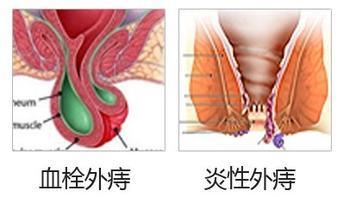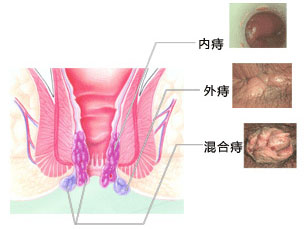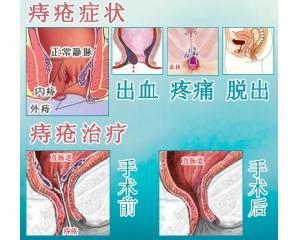<!DOCTYPE html>
Handling the Growth of Hemorrhoid ThrombosisUnderstanding Hemorrhoid Thrombosis
Hemorrhoid thrombosis, commonly known as a thrombosed hemorrhoid, occurs when a blood clot forms in a hemorrhoid. Hemorrhoids are swollen blood vessels in the lower part of the rectum and anal canal, and when they become inflamed, they can lead to thrombosis. External hemorrhoids are those located outside the anal opening, and when they thrombose, they can become quite painful and uncomfortable.
Signs of a Growing Thrombosed Hemorrhoid
One of the first signs that a thrombosed hemorrhoid is growing is an increase in pain and swelling. The affected area may become increasingly sensitive, and the individual might notice a purple or blue discoloration. Other symptoms include a hard lump around the anal area, difficulty sitting or walking, and rectal bleeding.
Immediate Actions to Take
If you suspect that your thrombosed hemorrhoid is growing, it's important to take immediate action. Here are some steps you can follow:
Apply ice packs to the anal area for 10-15 minutes at a time to reduce swelling and pain.
Take a warm sitz bath several times a day to relieve discomfort and promote healing.
Use over-the-counter pain relievers such as acetaminophen or ibuprofen to manage pain.
Consider using a hemorrhoid cream or ointment that contains hydrocortisone to reduce inflammation and itching.
Avoid straining during bowel movements and increase your intake of fiber to soften the stool.
Seeking Professional Help
While home remedies can be effective for mild cases, it's important to seek professional medical advice if your thrombosed hemorrhoid is not improving or if the symptoms are severe. A healthcare provider can assess the situation and recommend appropriate treatment.
Here are some situations where you should seek professional help:
If the pain is intense and does not improve with over-the-counter treatments.
If you experience a fever, which could indicate an infection.
If there is difficulty urinating or a feeling of fullness in the rectum that doesn't go away.
If you notice significant blood loss or the lump does not decrease in size after a few days.
Treatment Options
There are several treatment options for a growing thrombosed hemorrhoid, depending on the severity of the condition. Here are some of the common treatments:
Thrombectomy: This is a surgical procedure to remove the blood clot. It is typically performed in a doctor's office and is often done under local anesthesia.
Medications: In some cases, a healthcare provider may prescribe oral or topical medications to reduce inflammation and pain.
Lifestyle changes: Increasing fiber intake, staying hydrated, and avoiding constipation can help prevent future hemorrhoids.
Ligation: This procedure involves tying off the hemorrhoid to cut off the blood supply, causing it to shrink and fall off.
Prevention and Self-Care
Preventing hemorrhoids and thrombosed hemorrhoids involves maintaining a healthy lifestyle. Here are some tips:
Eat a diet rich in fiber, such as fruits, vegetables, whole grains, and legumes.
Stay hydrated by drinking plenty of water.
Exercise regularly to maintain healthy bowel movements.
Do not sit on the
转载请注明来自舒臣办公:复印机、打印机租赁与销售服务,本文标题:《血栓外痔不断变大怎么办,血栓外痔血栓不消怎么办 》












 蜀ICP备2022005971号-1
蜀ICP备2022005971号-1
还没有评论,来说两句吧...